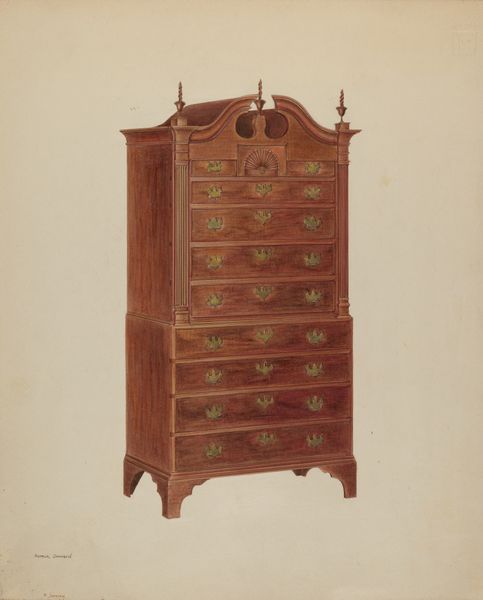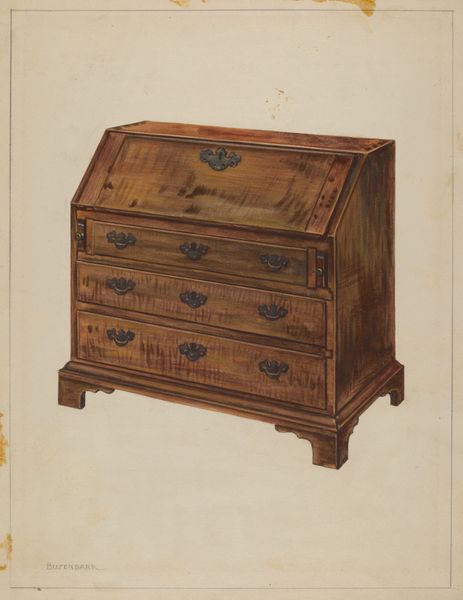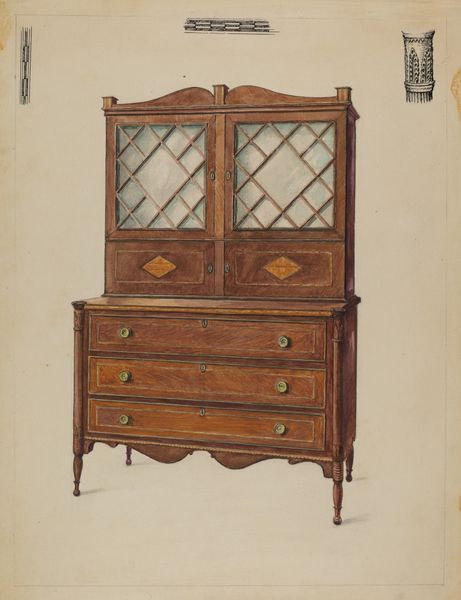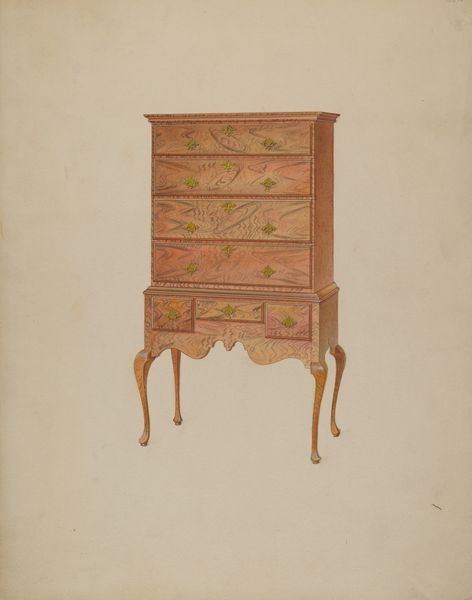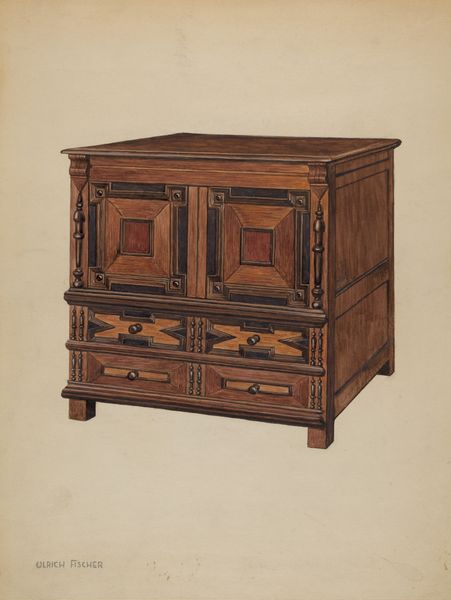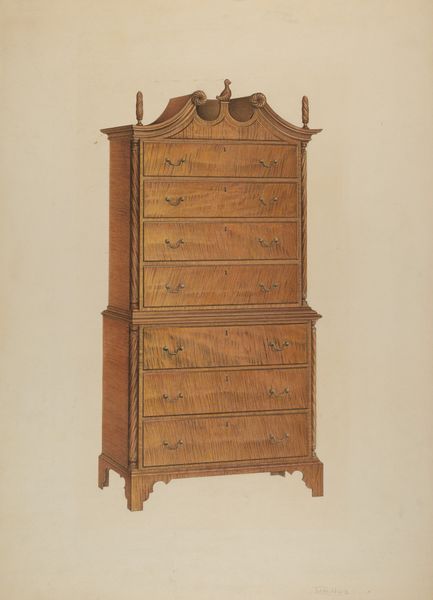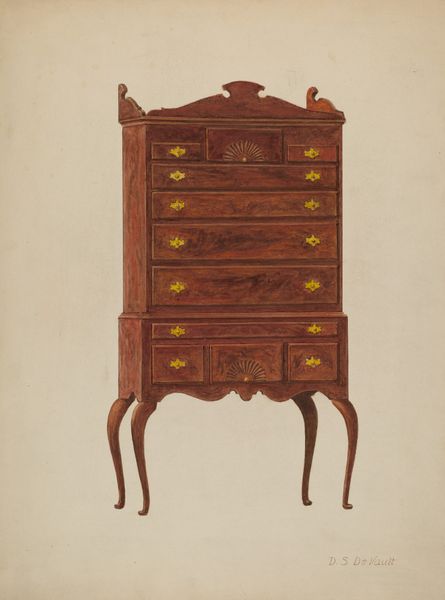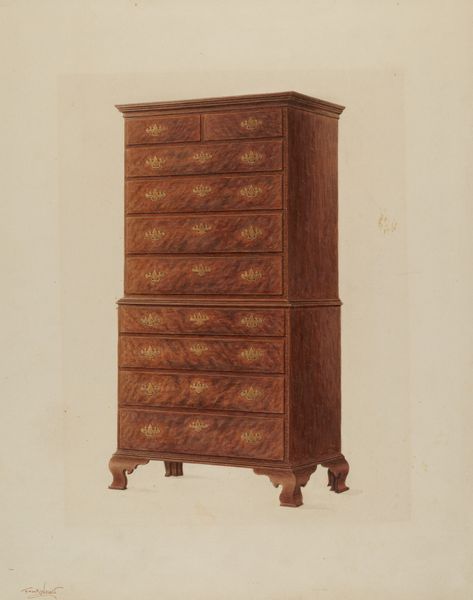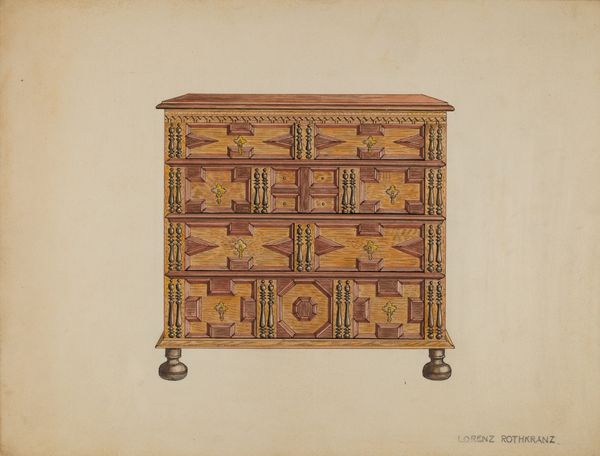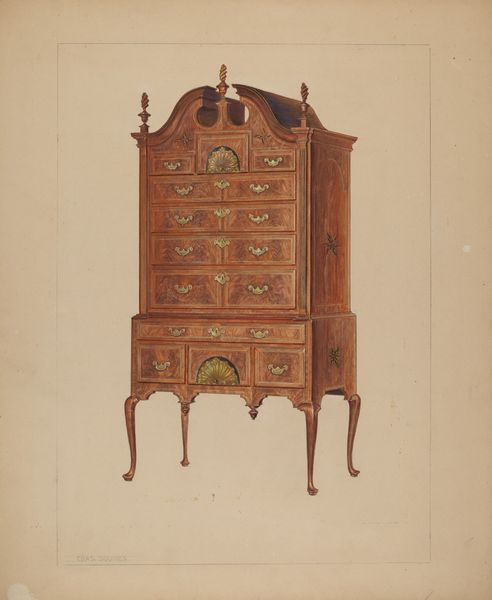
drawing, watercolor
#
drawing
#
water colours
#
watercolor
#
watercolour illustration
#
academic-art
#
decorative-art
Dimensions: overall: 23.1 x 30.5 cm (9 1/8 x 12 in.)
Copyright: National Gallery of Art: CC0 1.0
Curator: Allow me to introduce "Slant-Top Desk," a watercolor drawing created around 1953 by Nicholas Gorid. Editor: My first impression is one of muted elegance. There's a careful precision here, almost as if it's aspiring to an ideal of domestic order. Curator: Indeed. Notice how the artist meticulously renders the wood grain and the subtle variations in tone. The composition emphasizes the desk's geometry, presenting it as a study in rectangular forms. What does this structure communicate? Editor: It communicates aspirations for order and stability that furniture like this offered within the mid-century home, specifically, a rising professional class seeking respectability. There's a subtle narrative here about status. The lock and key on each drawer and compartment signals control and secrecy—but of what? Family heirlooms? Bank statements? It invites us to ask about who used such furniture, and what the desk represented to them. Curator: An astute observation. But consider how the formal qualities—the interplay of light and shadow, the careful execution—elevate the object beyond its function. Is it simply an idealized commodity? Editor: I don't think we can separate the two. By imbuing a common household object with artistic skill, it emphasizes the desk's importance within a system of status. In many homes a desk was not just a desk but a reflection of professional and patriarchal status. The rise of suburbia and domesticity during that time period plays a key role here. Curator: An interesting intersection, truly. It highlights the layers of design consideration, beyond mere utility. Editor: Precisely, that object carries stories, desires, and societal values, even if rendered on a page. Curator: So true. And what it reminds us about mid-century cultural aesthetics makes us pause, doesn't it? Editor: Exactly, this opens so many windows to ask interesting questions!
Comments
No comments
Be the first to comment and join the conversation on the ultimate creative platform.
